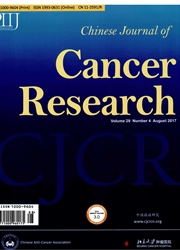

 中文摘要:
中文摘要:
Objective: A solid understanding of levels and trends of spending on cancer is important to evaluate whether our healthcare resources were wisely spent and to prioritize future resources for cancer treatment and prevention.However, studies on economic burden of cancers in China are scant and the results are inconsistent.Methods: The Chinese hospital information database and nearly 350 million inpatient medical record data were used. As the ratios of cancer inpatient payments to total inpatient payments were mainly influenced by the grades and sites of hospitals, the estimates of payments of cancer inpatients in this study were stratified by hospital grades and provinces. Only the payments of cancer inpatients happened in grade 2, grade 3 and specialized cancer hospitals were included in the analyses. The total medical payments of cancers in China were estimated based on the ratios of outpatient payments to inpatient payments in specialized cancer hospitals.Results: From 2011 to 2015, the payments of cancer inpatients in China have increased by 84.1% and the total inpatient payments reached 177.1 billion RMB in 2015, accounting for 4.3% of the total health expenditure in China. Based on the ratio of outpatient payments to inpatient payments, the total payments on cancer treatments in China were estimated to be 221.4 billion RMB in 2015. Among different cancer types, the highest payments were the treatment of trachea, bronchus and lung cancer. The major cancer inpatient payments(67.1% in 2015) spent in grade 3 general hospitals and this ratio increased continually from 2011 to 2015. The expenditure of cancer treatments also varies by region with the major expenditure in the eastern region of China.Conclusions: This study estimated the total payments of cancer treatments in China and analyzed how the money was spent on cancer treatments in the recent 5 years, which would provide information for decision makings on the allocation of resources to service provisioning, prevention strategies, research funding, and asses
 英文摘要:
英文摘要:
Objective: A solid understanding of levels and trends of spending on cancer is important to evaluate whether our healthcare resources were wisely spent and to prioritize future resources for cancer treatment and prevention. However, studies on economic burden of cancers in China are scant and the results are inconsistent. Methods: The Chinese hospital information database and nearly 350 million inpatient medical record data were used. As the ratios of cancer inpatient payments to total inpatient payments were mainly influenced by the grades and sites of hospitals, the estimates of payments of cancer inpatients in this study were stratified by hospital grades and provinces. Only the payments of cancer inpatients happened in grade 2, grade 3 and specialized cancer hospitals were included in the analyses. The total medical payments of cancers in China were estimated based on the ratios of outpatient payments to inpatient payments in specialized cancer hospitals. Results: From 2011 to 2015, the payments of cancer inpatients in China have increased by 84.1% and the total inpatient payments reached 177.1 billion RMB in 2015, accounting for 4.3% of the total health expenditure in China. Based on the ratio of outpatient payments to inpatient payments, the total payments on cancer treatments in China were estimated to be 221.4 billion RMB in 2015. Among different cancer types, the highest payments were the treatment of trachea, bronchus and lung cancer. The major cancer inpatient payments (67.1% in 2015) spent in grade 3 general hospitals and this ratio increased continually from 2011 to 2015. The expenditure of cancer treatments also varies by region with the major expenditure in the eastern region of China. Conclusions: This study estimated the total payments of cancer treatments in China and analyzed how the money was spent on cancer treatments in the recent 5 years, which would provide information for decision makings on the allocation of resources to service provisioning, prevention strategies, research funding, and
 同期刊论文项目
同期刊论文项目
 同项目期刊论文
同项目期刊论文
 期刊信息
期刊信息
